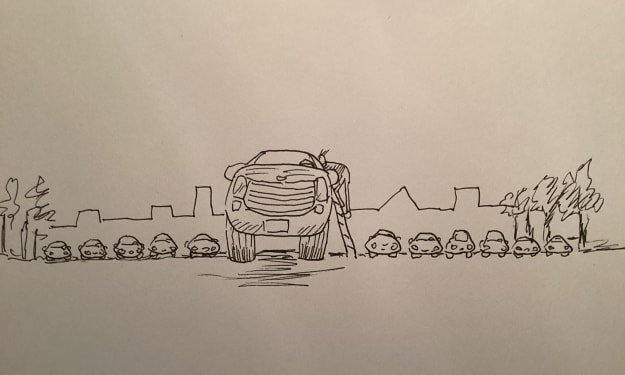
A few years ago, I found myself breaking into my own house on a bitter winter night in Montreal. It was around midnight, the temperature plummeting to minus 40 degrees, a point where Celsius and Fahrenheit scales intersect. I had just returned from visiting a friend, Jeff, across town. As I stood on my front porch, I realized my keys were missing, and to my dismay, I spotted them through the window, comfortably lying on the dining room table. Panic set in; I couldn't go back to Jeff's house due to an early flight the next morning. Desperation and freezing cold led me to a bold decision – breaking through my basement window with a large rock.
After clearing out the glass shards and crawling through, I covered the opening with a piece of cardboard, planning to call my contractor the next morning to fix it. The next day, with cortisol-fueled cloudy thinking, I woke up to concerns about the broken window, a mental note to call my contractor, freezing temperatures, and imminent meetings in Europe. However, my groggy mental state blinded me to a crucial detail – I left my passport inside. Rushing back through the snow, I made it to the airport just in time, only to discover they had given away my seat. The result: an uncomfortable, sleep-deprived eight-hour flight in the back of the plane next to the bathrooms.
Reflecting on this chaotic experience, I wondered if there were ways to prevent or minimize such mishaps. A chance dinner with my colleague, Nobel Prize winner Danny Kahneman, introduced me to the concept of "prospective hindsight" or the pre-mortem. In a pre-mortem, you anticipate potential failures and devise strategies to prevent or mitigate them.
One obvious strategy is designating specific spots for commonly misplaced items. Utilizing our spatial memory, the brain, particularly the hippocampus, is adept at remembering static locations. For example, having a dedicated hook for keys or a specific drawer for passports can significantly reduce the likelihood of misplacing them.
When it comes to travel, taking pictures of essential documents like credit cards, driver's license, and passport and emailing them to yourself ensures easy access for replacements if lost or stolen. The pre-mortem involves recognizing that stress induces the release of cortisol, impeding clear thinking. Thus, establishing systems and strategies in advance can be crucial.
Moving into the realm of medical decisions, the pre-mortem becomes even more relevant. Consider the example of a doctor suggesting a statin for high cholesterol. Beyond the potential benefits, understanding the "number needed to treat" (NNT) is vital. In the case of statins, the NNT is 300, meaning 300 people need to take the drug for one person to be helped. This statistic, coupled with the "number needed to harm" (NNH), which indicates the likelihood of side effects, allows for a more informed decision-making process.
For instance, if a drug has an NNT of 300 and an NNH of 5%, it means you're 15 times more likely to be harmed than helped by the drug. Engaging in a conversation with your doctor about these numbers, side effects, and potential outcomes is crucial for informed consent.
The pre-mortem approach extends to other critical decisions, such as surgeries. For prostate removal, a common procedure, the NNT is 49, and 50% of patients experience side effects, including impotence and urinary incontinence. Contemplating the potential risks, benefits, and quality of life considerations is essential.
In essence, the pre-mortem urges us to prepare for our inherent flaws and anticipate failures. By establishing systems, asking the right questions, and engaging in pre-emptive thinking, we can minimize the impact of unexpected events. After my snowy Montreal night, I had a combination lock installed with an easy-to-remember code, ensuring I wouldn't find myself locked out again. While I might not be completely organized, I see the journey toward better organization as a gradual process. The pre-mortem serves as a valuable tool in navigating life's complexities and uncertainties.
About the Creator
Enjoyed the story? Support the Creator.
Subscribe for free to receive all their stories in your feed. You could also pledge your support or give them a one-off tip, letting them know you appreciate their work.





Comments
There are no comments for this story
Be the first to respond and start the conversation.